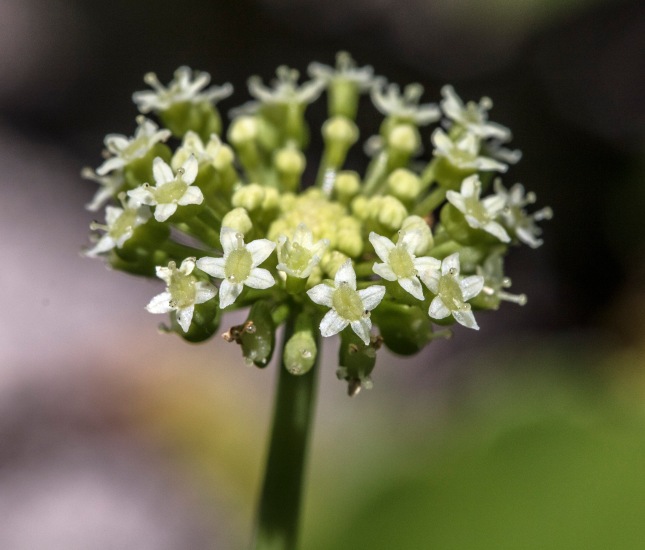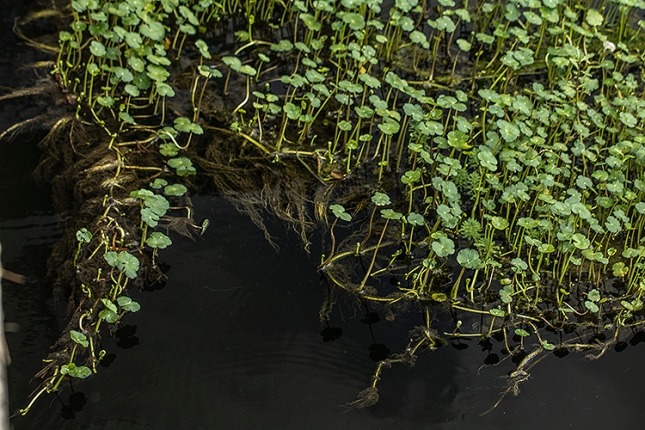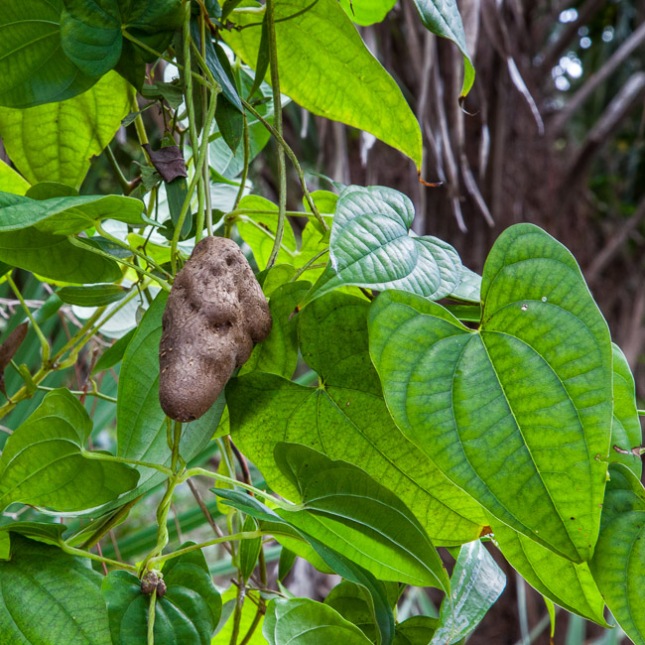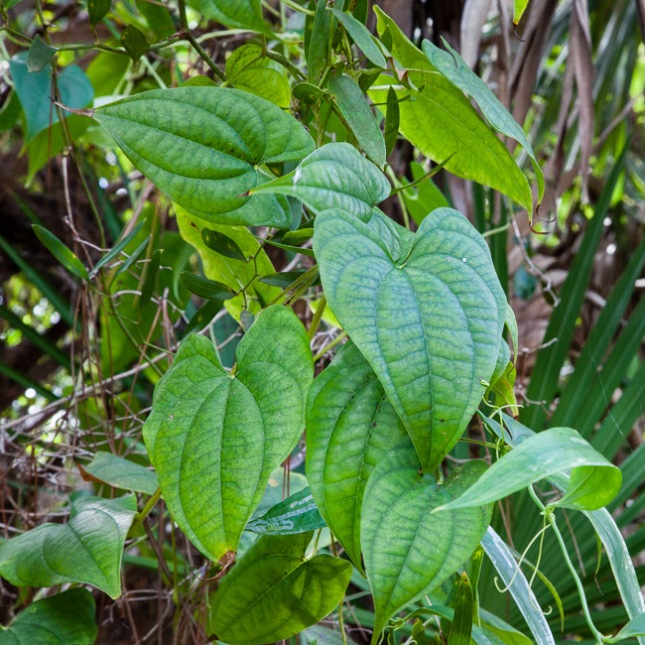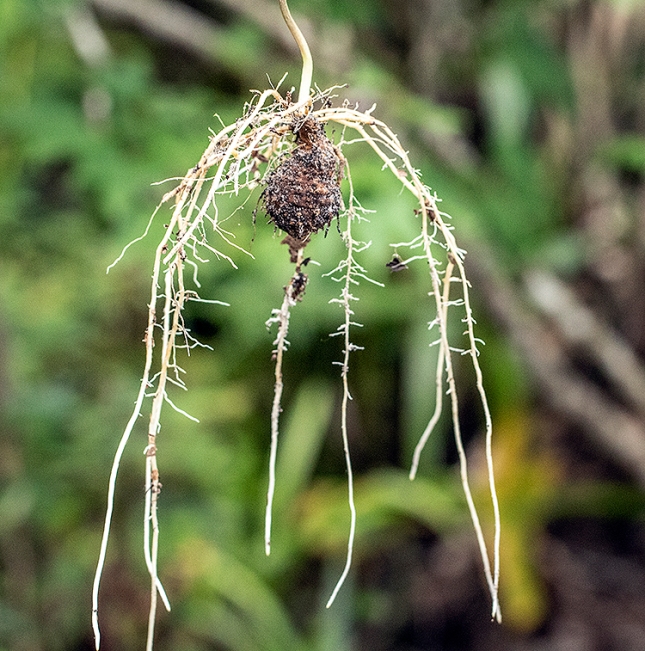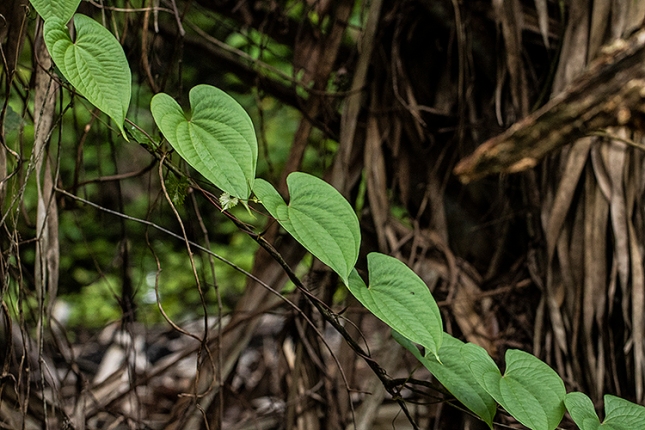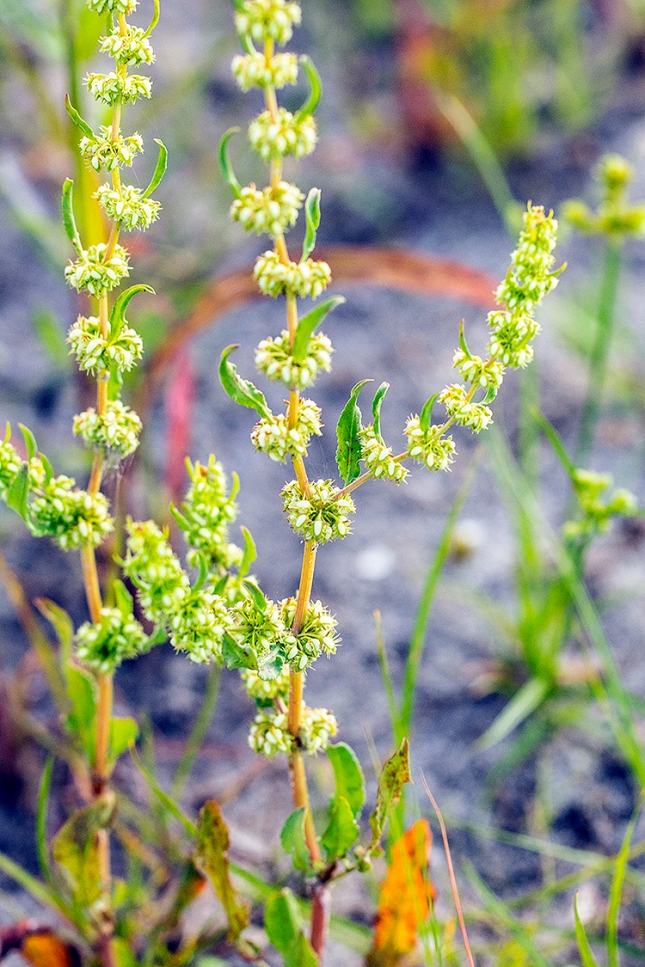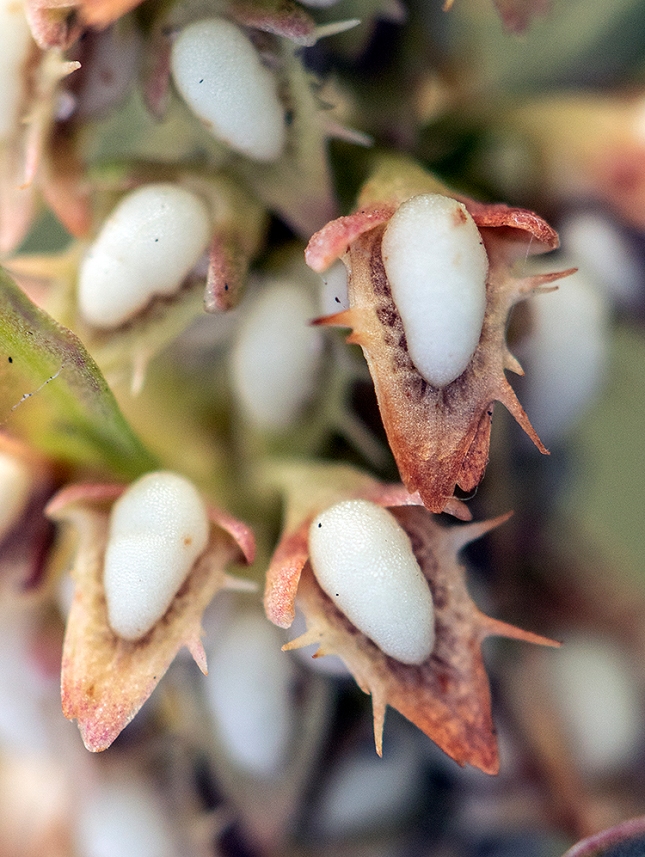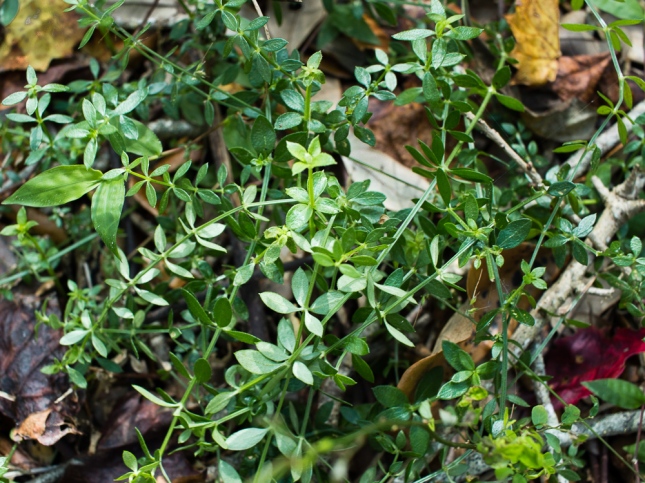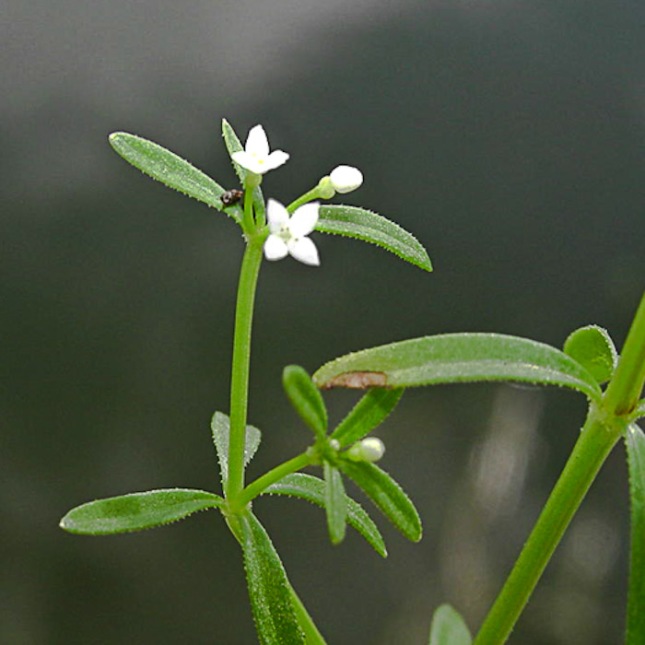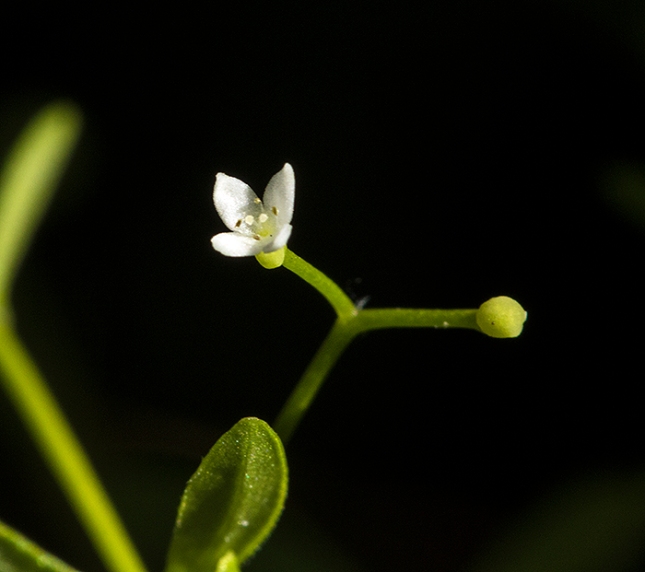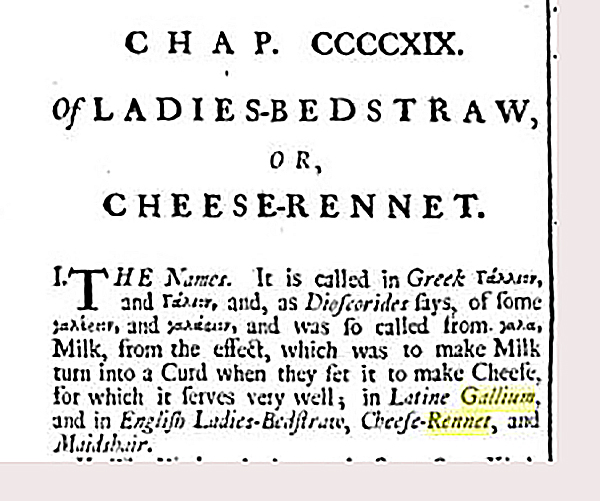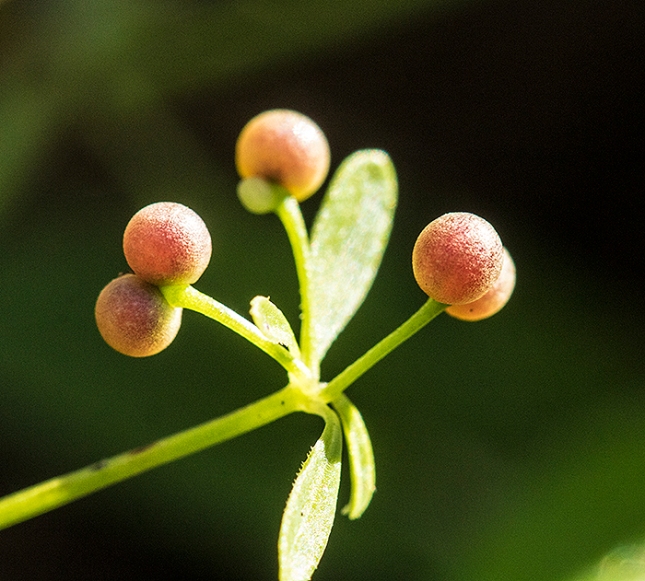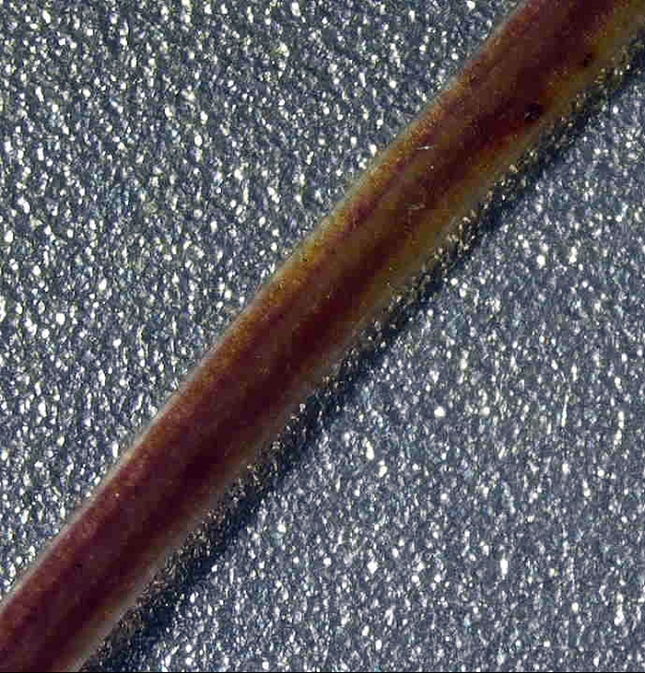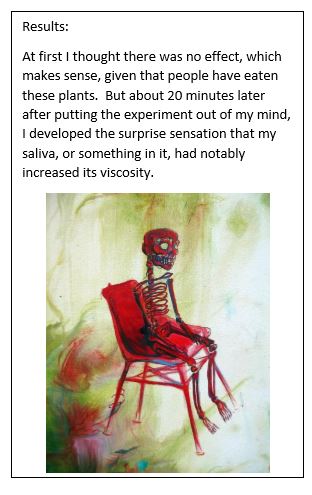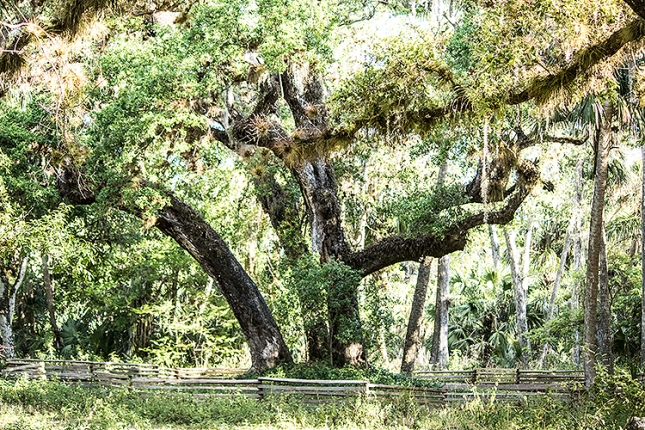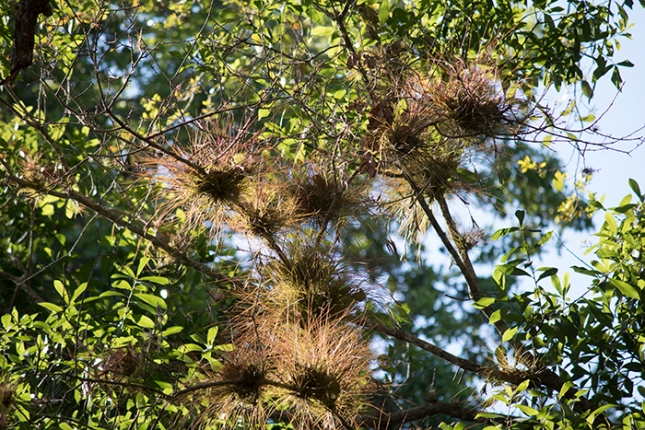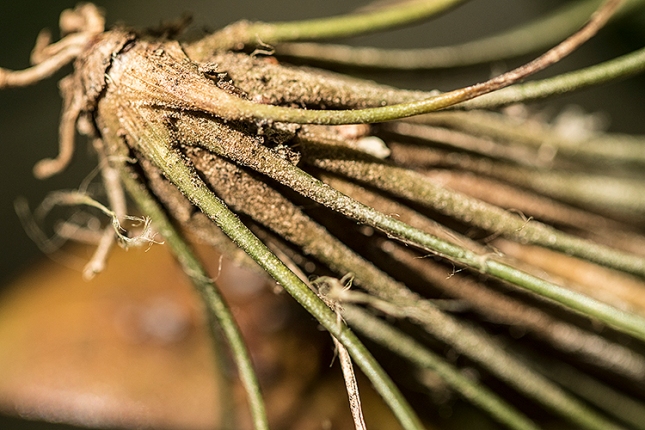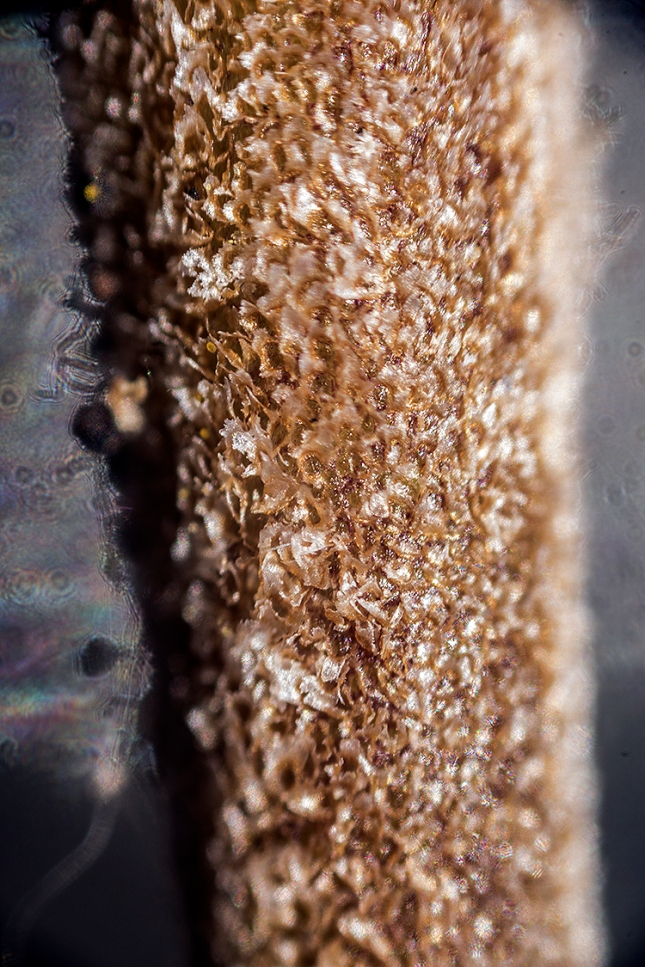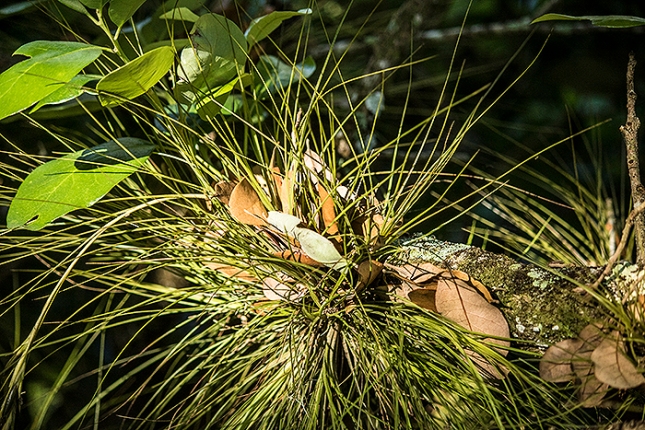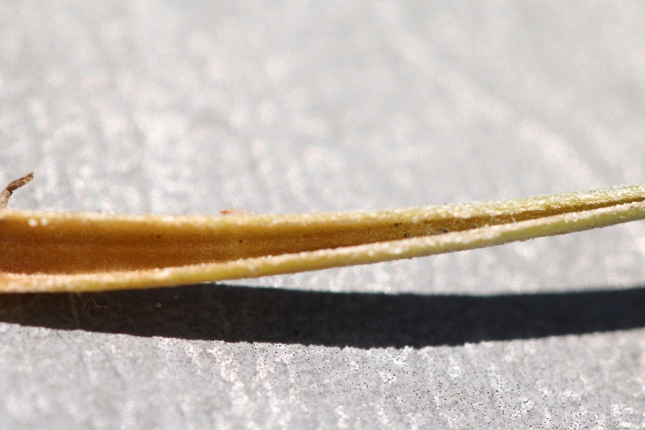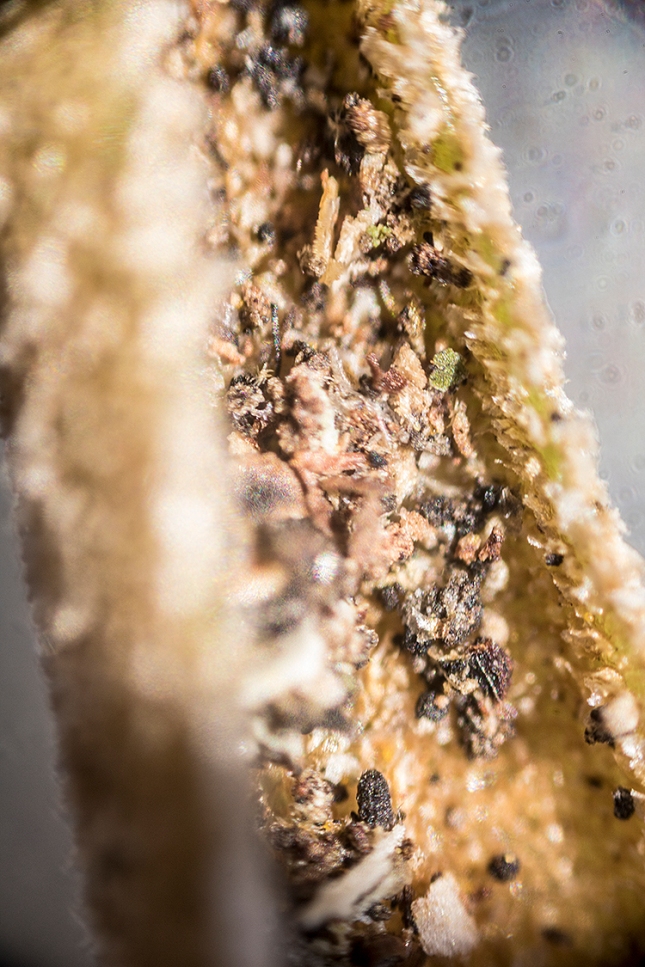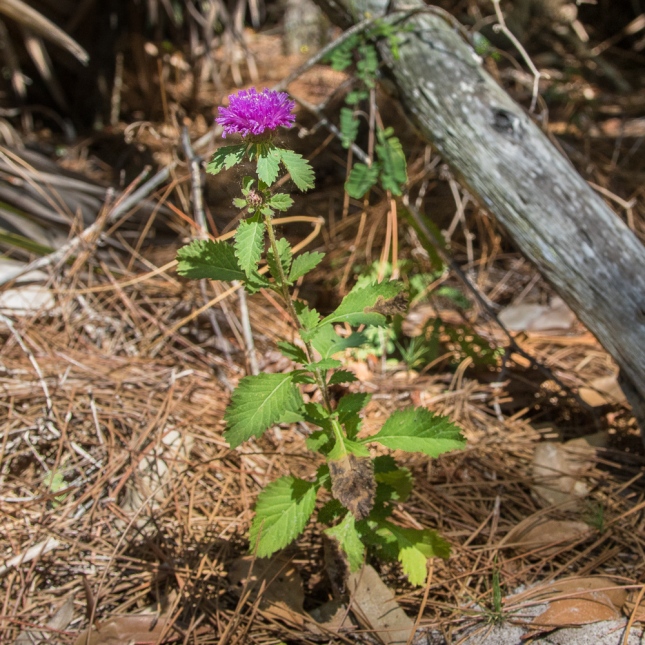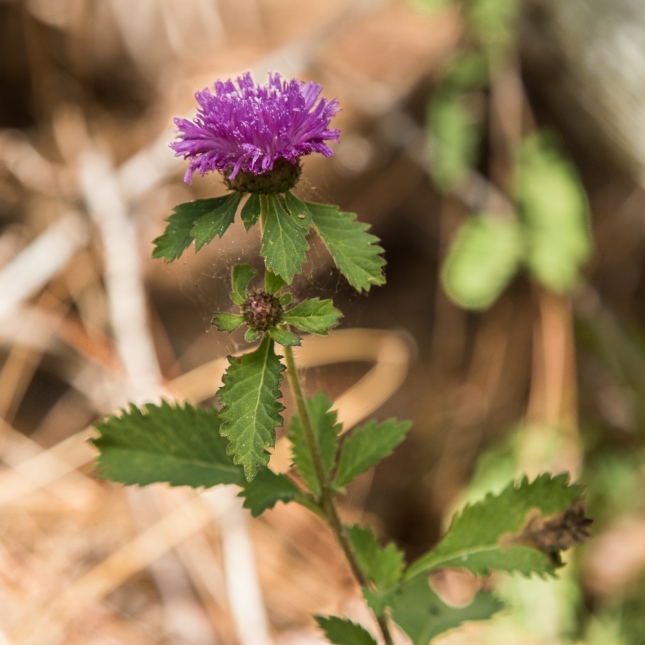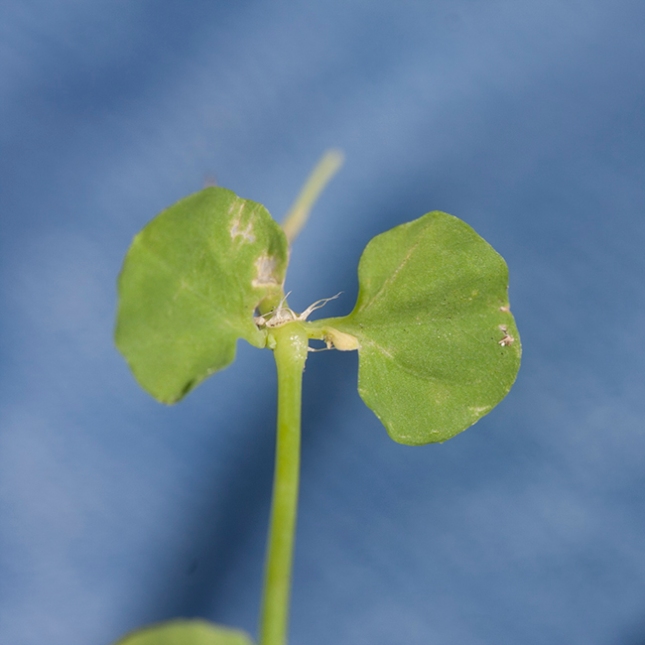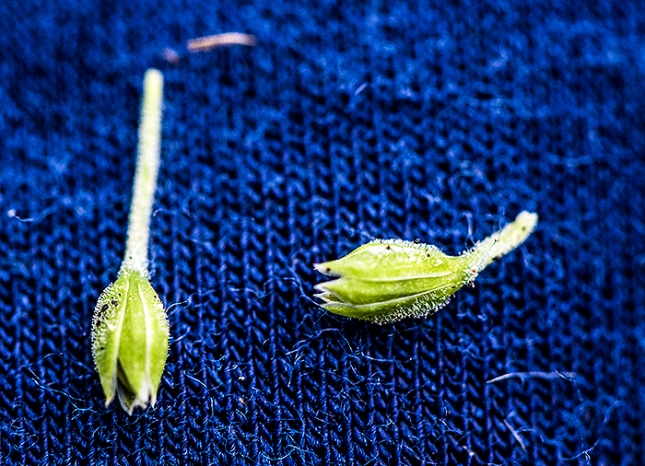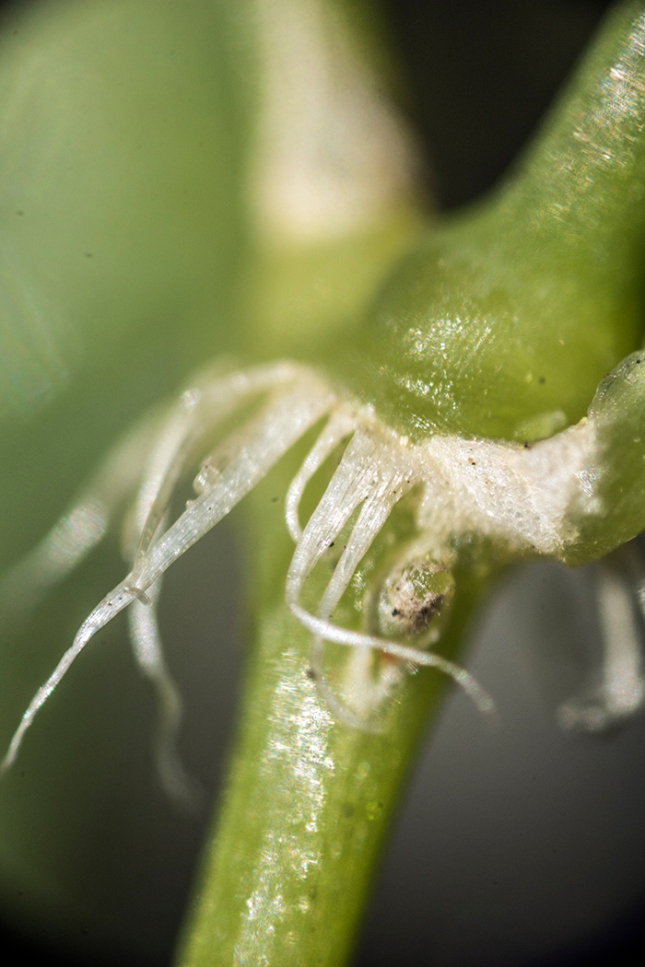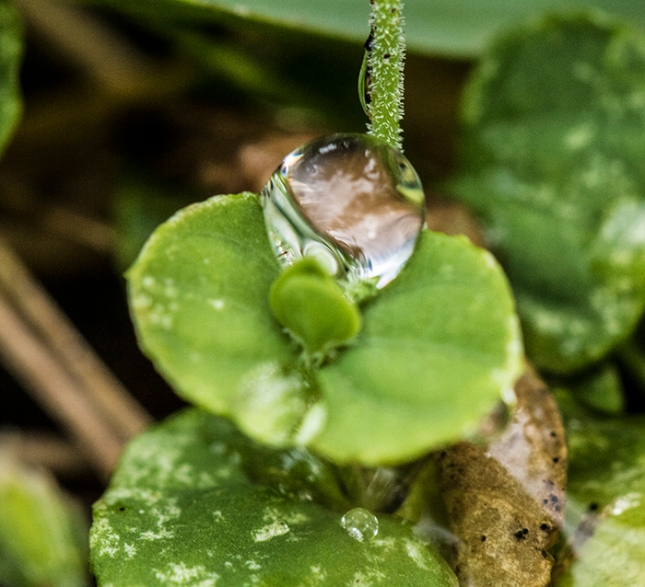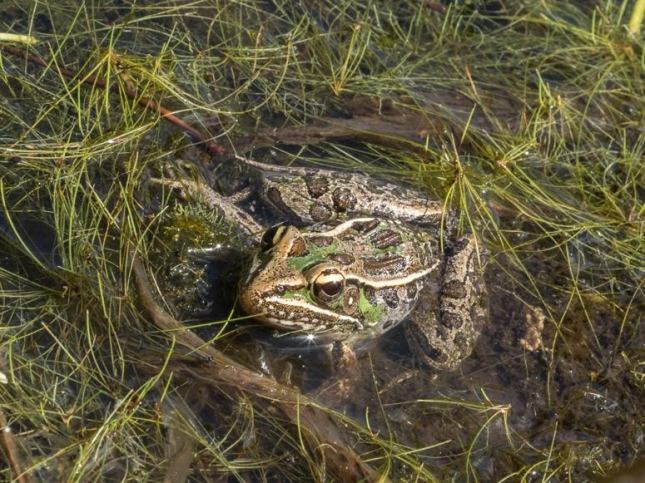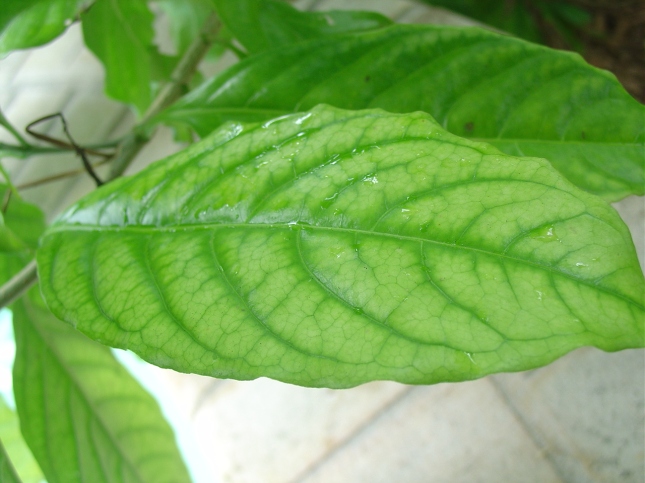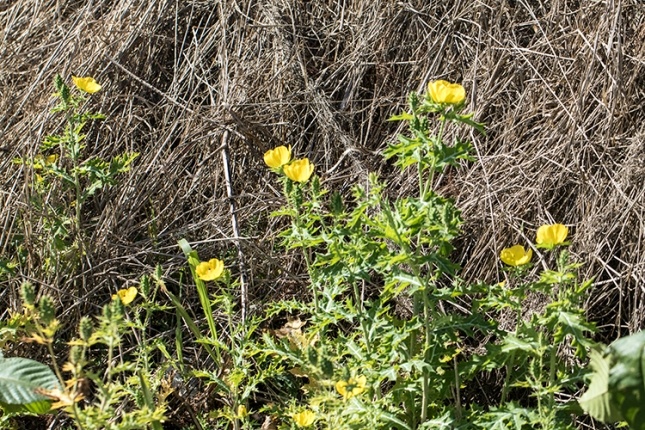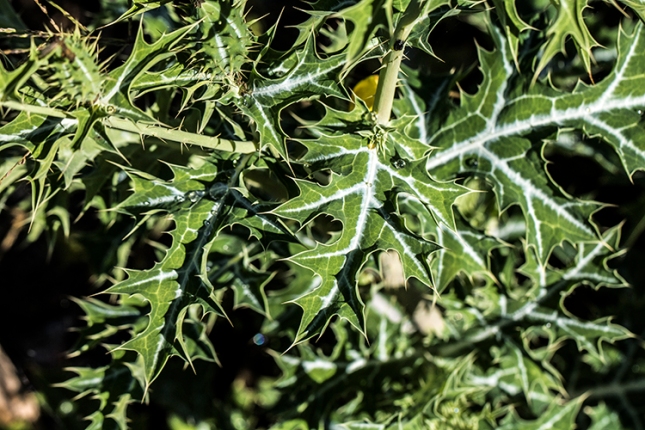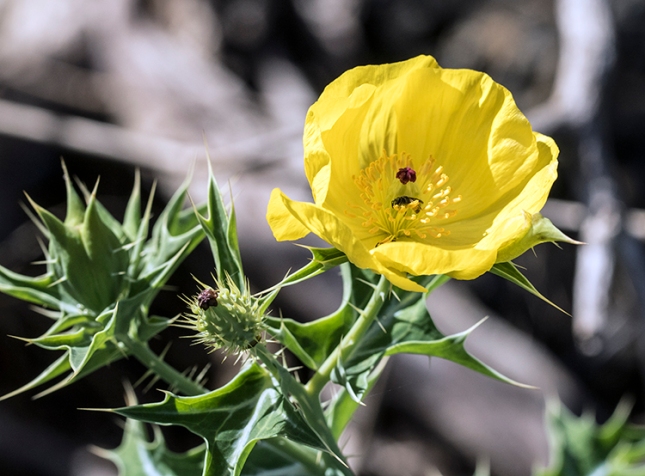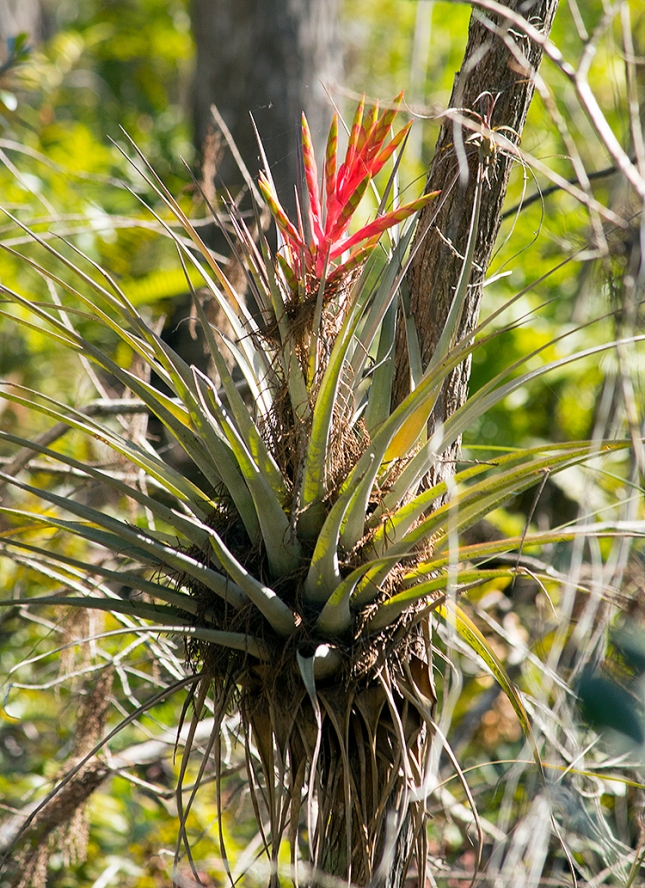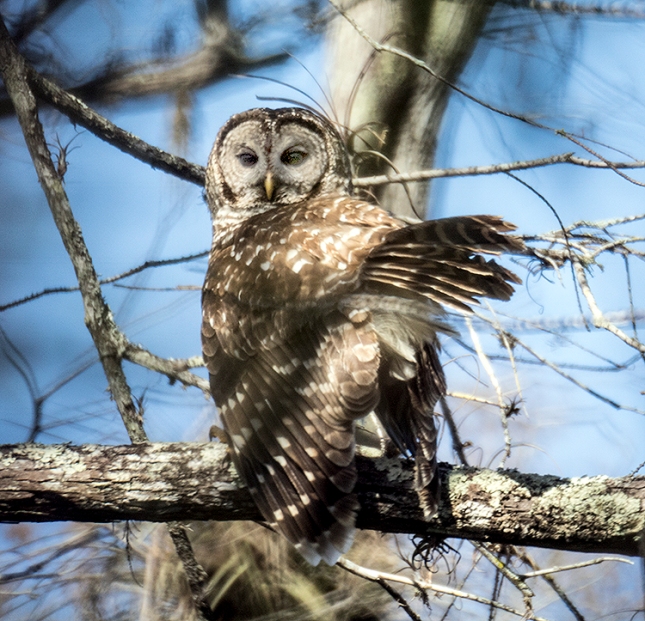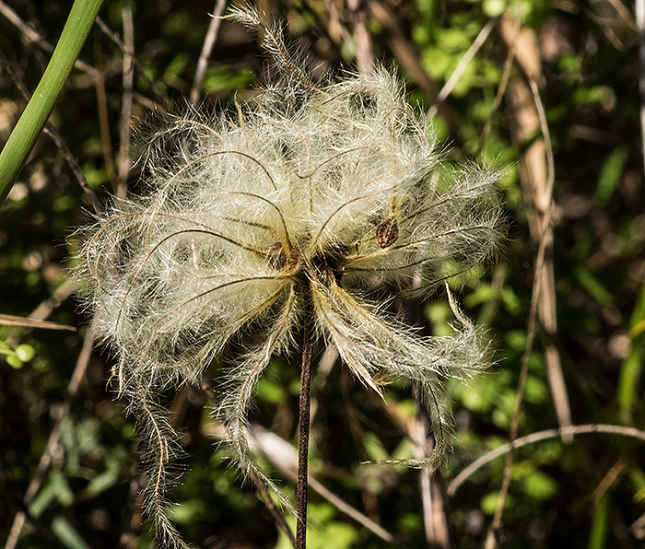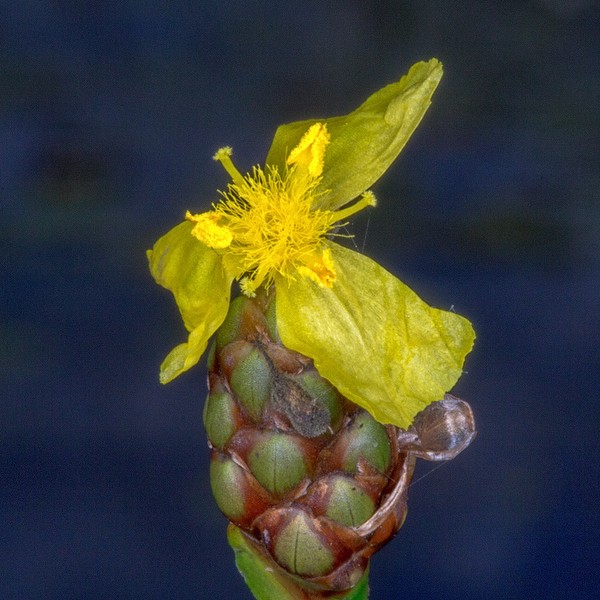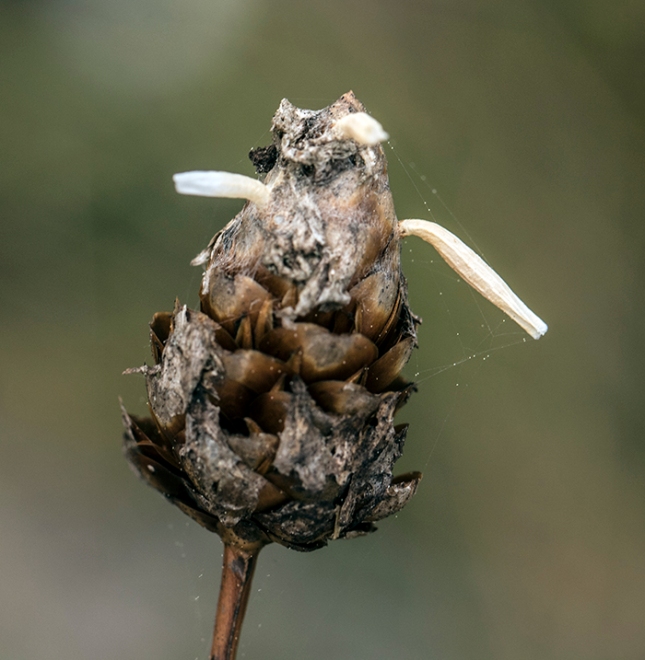Typha latifolia and T. domingensis
(Typhos is Greek for marsh and is an ancient name for these plants, latifolia means broad leaves, and domingensis means lives in Dominica.)
Typhaceae
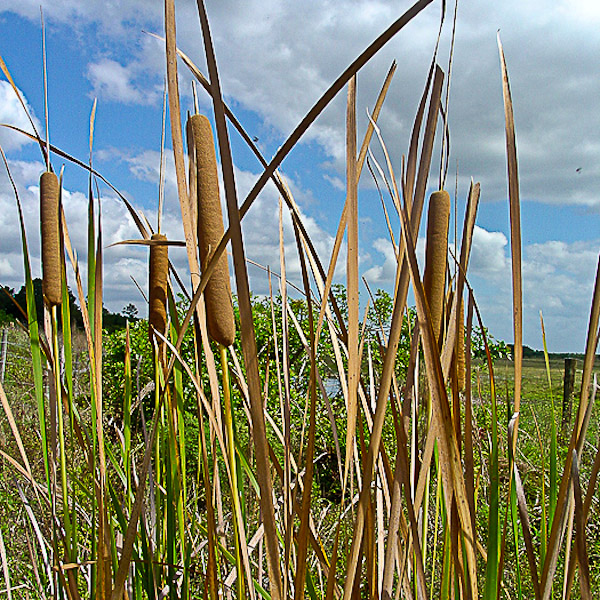
Cat-tails by John Bradford
Fuzzy corn dogs on vertical skewers. Cat-tails we all know—big, abundant, curious-looking. John and I photographed today in the Haney Creek Natural Area near Jensen Beach, Florida where the cat-tails were twirling in the breeze. Two native species share Florida:
- Typha latifolia has a huge distribution, in the U.S. from Florida to Alaska, and far beyond. Its male and female flowers are distinctively adjacent on the spike. The seedlike fruits burst in water.
- Typha domingensis likewise has a broad distribution, on average preferring warmer places, and often in brackish water. This species has narrower leaves, and the male and female flowers have space between them on the spike. Its fruits don’t rupture in the drink.
Typha flower spikes sometimes have developmental abnormalities, such as two clusters of female flowers where there should be one, or stalks with male flowers only. Our two species hybridize, and the oddities could conceivably be due to genetic mixing. The hybrids can have orange spikes.
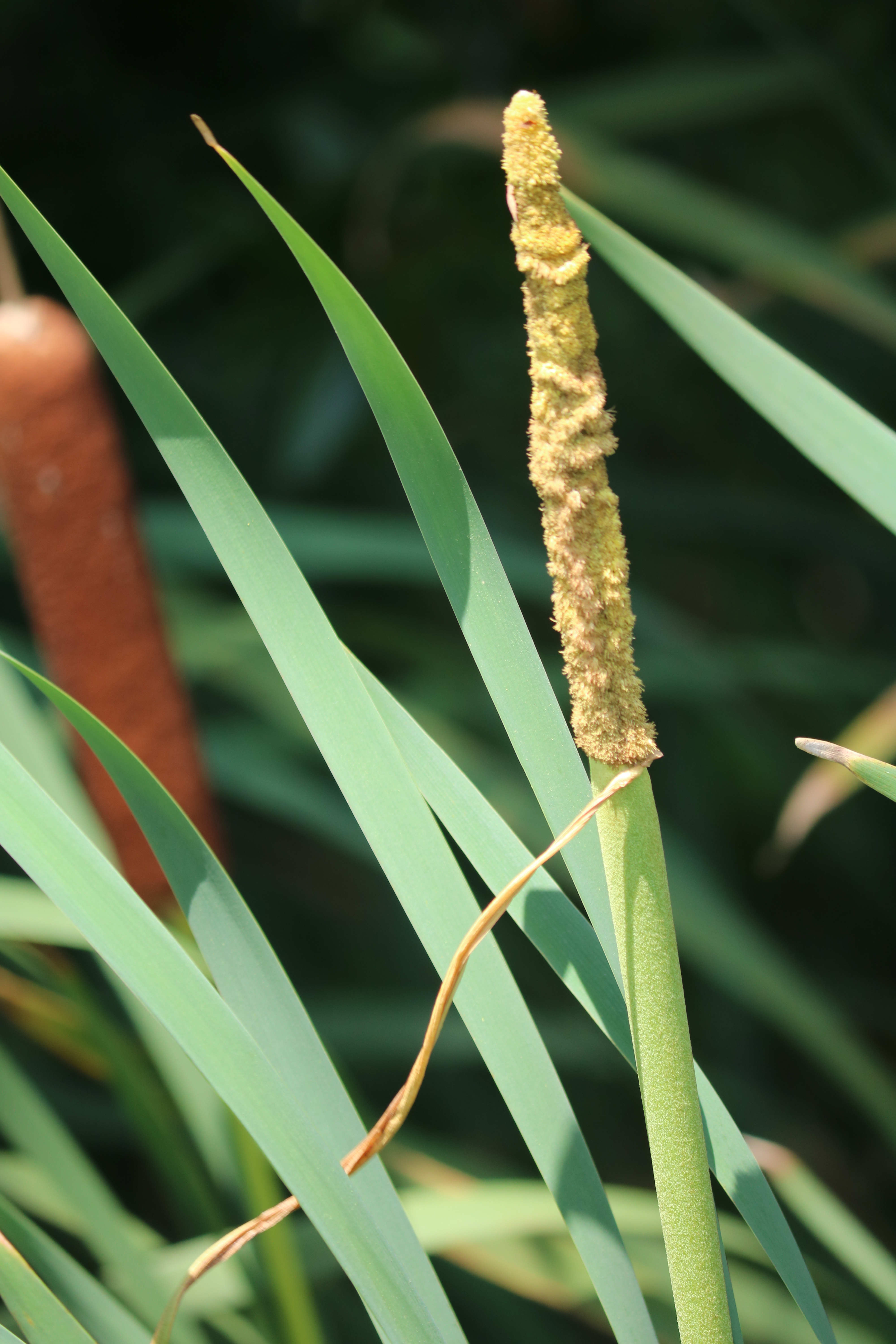
Deformed spike
Countless historical uses for cat-tails range from medicines to weaving and thatch. Miami botanist Julia Morton in 1974 listed hundreds of uses (see link 1 below). The rhizomes are food, including “Cossack Asparagus” in Russia, although local authors warn against consumption due to yuk accumulation.
What I like are the millions of fluffy windblown seedlike fruits. Soaked in kerosene, the puffy spikes become torches, and the flammable seeds once gave dramatic theater lighting effects. The pillowy masses stuff anything that needs to be soft or buoyant such as lifejackets during WWII, and even baseballs and cradle linings.
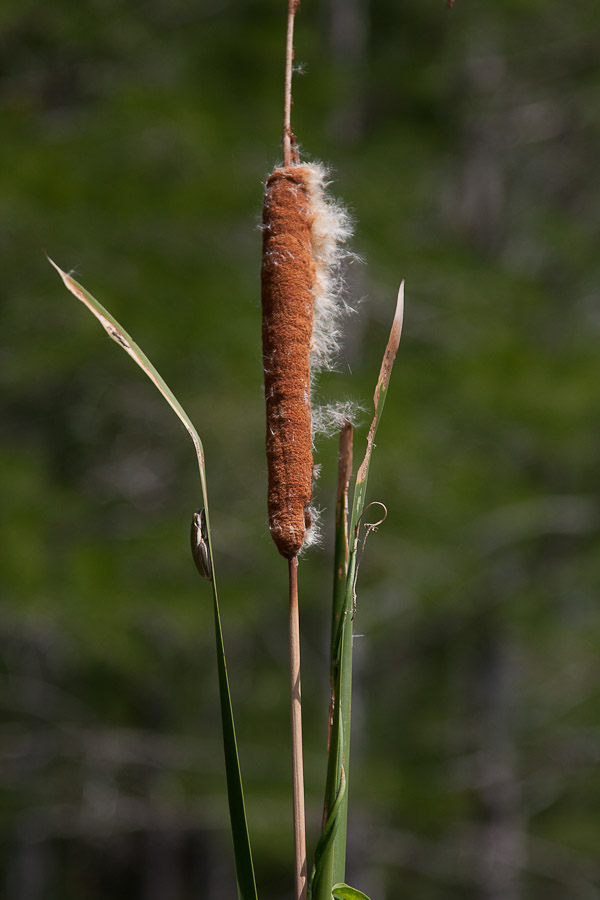
By JB. Look to the left.
Cat-tails love nutrients to a fault. As waters become enriched with pollutant nutrients, most famously phosphorus, cat-tails expand and displace other communities. They sometimes form extensive monocultures interlaced with rhizomes that start growing shortly after seed germination. Typha domingensis has a positive role in stormwater treatment areas removing phosphorus pollution, yet a negative role as a pollution-fed invader degrading the Everglades.
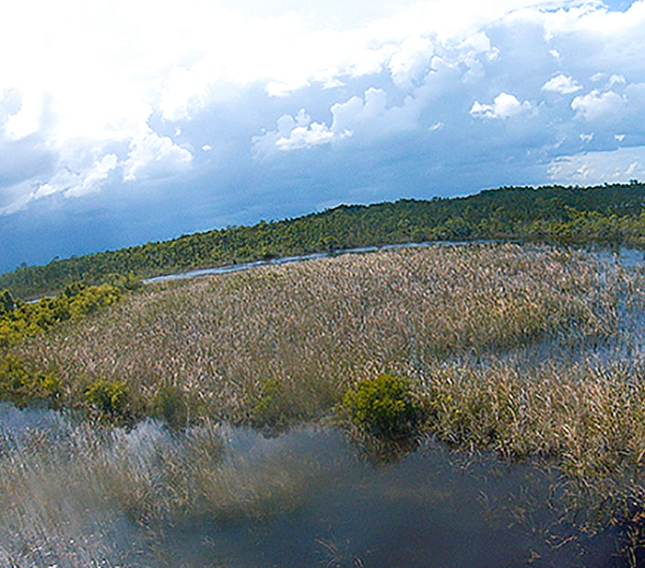
Pure CT stand. Leaves brown.
Now for the cool part—
The leaves come up arranged in a fan, and twist artistically in unison as the blades grow upward.
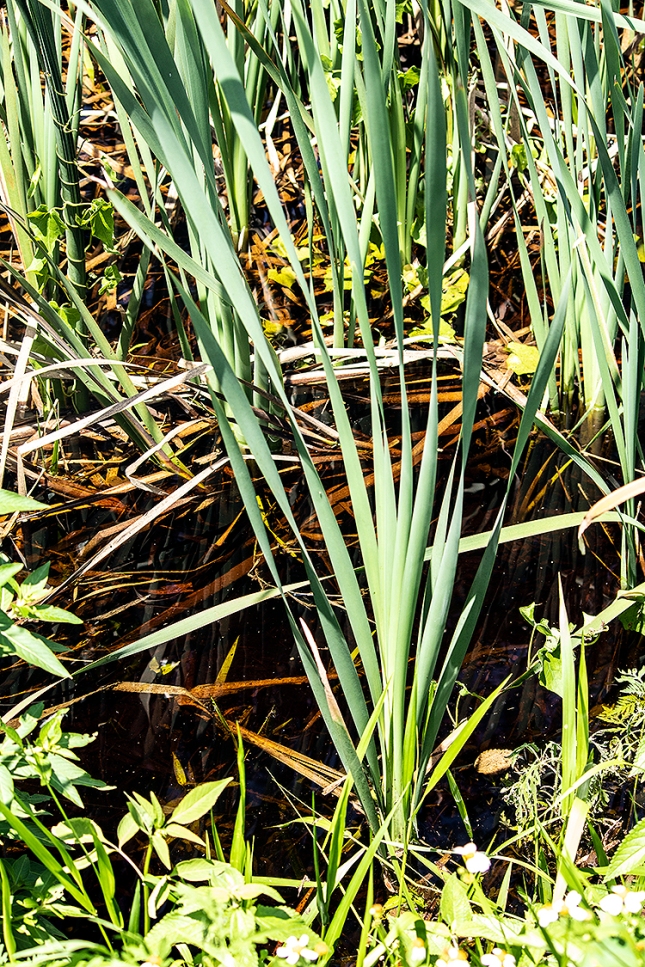
Leaf blades twisted, and with blue sunscreen.
Why grow twisted? Optimal positioning for photosynthesis? Botanists have been pondering that question for a long time, sometimes in engineering detail. Biophysicists Zi-Long Zhao, Zong-Yuan Liu, and Xi-Qiao Feng recently (2016) took a deep stab at it (link 3 below.) Their study rests on the observation that the twisted leaves twirl in the wind like those twisted front porch wind-spinners.
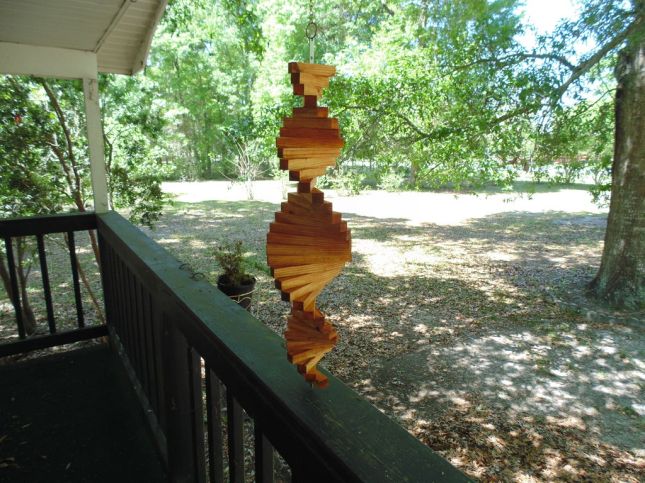
We can see it happen: CLICK FOR SHORT VIDEO TAKEN THIS WEEK
The biophysicists determined the twisted twirling to serve two functions:
1. To reduce wind-drag on the plants making damage less likely, and 2. To reduce wind-induced vibrations.
Now do not get me wrong, I’m not questioning their elegant analyses and hard-science conclusions, yet forgive me for tossing in a speculative add-on with no data:
Many leaves, especially in wide open hot places, experience too much solar exposure, suffering direct sun damage, interference with photosynthesis, and excessive heat. Many tropical species of open sunny areas have a special mechanism called C4 photosynthesis to protect their photosynthetic production from the blazing sun. Cat-tails do not have this mechanism despite sharing hot sunny haunts with C4-equipped competitors.
Cat-tails thus may need some tricks of their own. The blue waxy covering on Typha latifolia can be interpreted as sunscreen. When the leaves twirl, no single surface experiences direct sun exposure continuously. Instead the rays distribute evenly on both sides of the blade. Moreover, the natural spinning fan blades probably shed heat directly and by evaporative cooling. Have you ever seen a sling psychrometer used for measuring relative humidity? It works by twirling in the air a thermometer surrounded by moist wrapping. Its evaporative cooling rate relative to a dry thermometer measures humidity. Twirling and evaporating likewise, the Cat-tail leaf is a living sling psychrometer perhaps.
Relevant links:
- Botanist Julia Morton and a million uses for cat-tails: CLICK
- Cat-tail weaving: CLICK
- Reference for Typha leaf twisting: CLICK
- Sling psychrometer: CLICK
Pat Bowman after the blog appeared sent this cool video of the seed release. Stand back and CLICK
